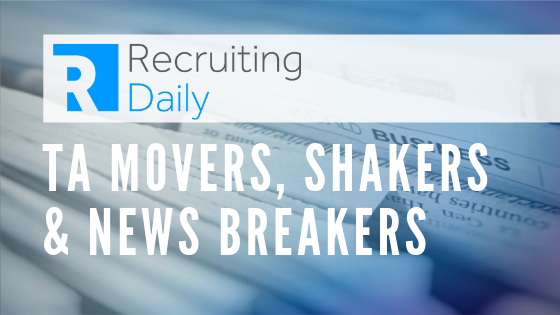The world is finally – finally – starting to appreciate the value of diversity and inclusion in the workplace, and we’ll all be better for it in the long run.
But we’re not there yet. Not even close.
Mark Feffer broke down the progress (or lack thereof) in a recent piece based on new research from the Workforce Disclosure Initiative. To put it nicely, the numbers were bleak, with only 19 percent of companies even disclosing data about their workforce – an increase from the year before.
Dig a little deeper, and things started looking worse, with 75 percent sharing a gender breakdown but only 36 percent reporting on ethnicity.
So, let’s take a moment to acknowledge that while we might be on the road to D&I, we’re early on, we have a long way to go – and that last part is keeping recruiters up at night.
Recruiters know that D&I doesn’t happen at once. They know this because they know who is in the workforce. But, even so, they’re tasked with not only prioritizing D&I but also delivering – and the pressure is mounting.
Supply chain thinking
Remember all that talk about purple squirrels a while back? Those elusive “perfect” candidates with the right mix of everything?
D&I initiatives have become a purple squirrel hunt. Except there’s a problem. A pink elephant in the room if we’re keeping with cutesy euphemisms.
It’s something few want to admit: there isn’t always the supply of diverse talent needed to satisfy demand. To play the long game, we also need to think about another familiar concept of talent (or candidate) pipelines.
Unfortunately, what we don’t always connect is the similarity between talent pipelines and supply chains. At least not until COVID-19 and coverage of PPE shortages, the skyrocketing price of lumber, and the Ever Given getting stuck in the Suez Canal.
Supply chains are what it takes to bring a product from source to supplier to end-user. Talent pipelines are what it takes to get a job seeker from source to candidate to employee. Chains and pipelines involve interconnected approaches that facilitate an activity – and if one part breaks down, the whole operation feels the effects.
When it comes to D&I, if there aren’t enough diverse job seekers entering the pipeline, there won’t be anyone to hire. So we can start to make a difference by engaging and speaking up, by going where the candidates are – directly to the source.
That’s the first step.
Making the investment
To guarantee the sustainability of pipelines, we also have to address the potential shortage of diverse candidates because, unlike consumer goods, candidates don’t get manufactured.
That’s not to suggest the commodification of diversity, but rather, how we understand the systems in place and what it will take to rethink the entire talent lifecycle. We have to acknowledge that inclusion requires investment because many organizations weren’t designed to retain diversity. At least not inherently.
Take women. It’s a well-known fact that women remain underrepresented in the STEM workforce. Lesser-known are the details of the decades-long journey to change this, beginning with World War II.
Gains have been made, with women making up 27 percent of STEM workers in 2019 versus 8 percent in 1970, but we’re talking about 50 years in between. We have to build the supply chain, which means seeking out, empowering, and developing diverse talent through early exposure, training and learning opportunities, and mentorship and fellowship.
Likewise, we should turn a critical eye to hiring processes. By now, it’s clear that if we keep doing things the same way, our supply chain will get stuck and impact our ability to fill the pipeline.
That includes how we source, engage, and attract candidates today and the strategies and programs we leverage to minimize bias and promote D&I post-hire.
Still, one study out of the U.K. found that ethnic minorities have to send 60 percent more applications to get the same response from employers as their white counterparts. That indicates that the immediate problem is those of us doing the recruiting.
So, we need to use tools that “level the playing field” for these candidates through anonymization. For example, by removing identifying characteristics that can trigger bias, we can match profiles with positions rather than focusing on names, photos, graduation years, or location.
Once we recognize that the future won’t be diverse unless we create it, we alleviate the immediate pressure to deliver.
It’s going to be a long road, one that we’re paving as we go.
Authors
William Tincup
William is the President & Editor-at-Large of RecruitingDaily. At the intersection of HR and technology, he’s a writer, speaker, advisor, consultant, investor, storyteller & teacher. He's been writing about HR and Recruiting related issues for longer than he cares to disclose. William serves on the Board of Advisors / Board of Directors for 20+ HR technology startups. William is a graduate of the University of Alabama at Birmingham with a BA in Art History. He also earned an MA in American Indian Studies from the University of Arizona and an MBA from Case Western Reserve University.
Recruit Smarter
Weekly news and industry insights delivered straight to your inbox.





